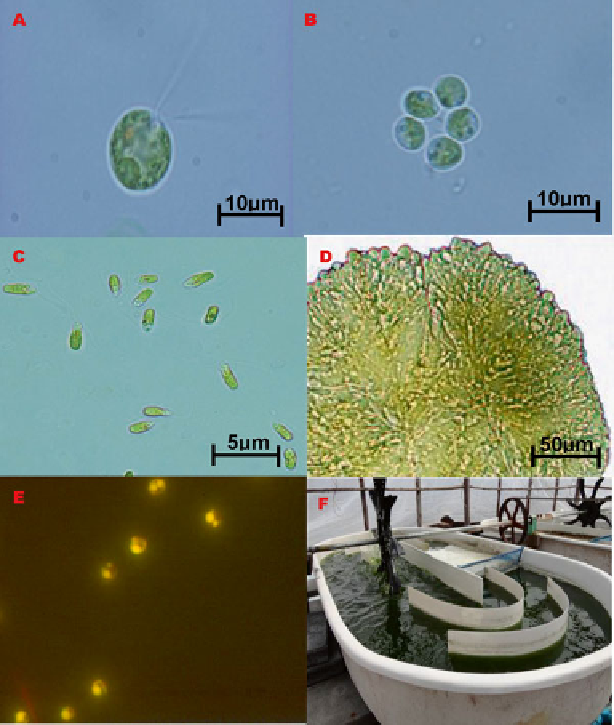Environmental Engineering Reference
In-Depth Information
F i g . 1
Morphological structures of some microalgae.
(
a
)
Chlamydomonas
sp., (
b
)
Chlorella
sp., (
c
)
Dunaliella
sp.,
(
d
)
Botryococcus braunii
, (
e
)
Chlorella vulgaris
stained
by Nile red, (
f
) culturing microalgae in mini raceway ponds
3.1
Freshwater Algae
like strands of green hair fl owing in the current.
Diatoms can appear to the naked eye as brown
mats of growth with soft masses or slimy lay-
ers on rocks.
Freshwater algae are found growing underwa-
ter on rocks, in ponds and lakes, and in mud in
streams and rivers. They are usually more
abundant in slower than in fast fl owing streams.
In inland areas, cultivation of fresh water
microalgae may be more suitable and will not
affect the fertile (agricultural) area in the same
way as marine algae. The major drawback is
contamination, and cultivation of freshwater
species allows a more diverse number of spe-
cies to be transmitted. There are many types of
freshwater algae, identifi ed as green algae
(Chlorophyta), red algae (Rhodophyta), and
diatoms (Bacillariophyta). Green algae look
3.2
Marine Water Algae
Marine forms are grown near coastal areas,
salt marshes, brackish water, or even floating
in the ocean. One successful way to improve
the economics of biomass productivity of
microalgae will be to cultivate marine micro-
algae (Uduman et al.
2011
). Marine microal-
gae can be grown in saline waters, so a
selective environment will serve to reduce

Search WWH ::

Custom Search